THERE’S something endlessly alluring about big brooding expanses of water surrounded by gangs of hills and woodland.
Since the first human inched towards the shoreline and wondered exactly what the wet stuff was, we’ve been instinctively flocking to the oceans, rivers, and lakes of this world for a little measure of peace and to sit in wonder at what lies beneath.
Edgar Allan Poe once wrote, “So lovely was the loneliness of a wild lake.” And although his ‘tell-tale heart’ wasn’t talking about Llyn Brianne, no doubt the man-made reservoir on the outskirts of Llandovery would have made a big impression on his gothic soul.
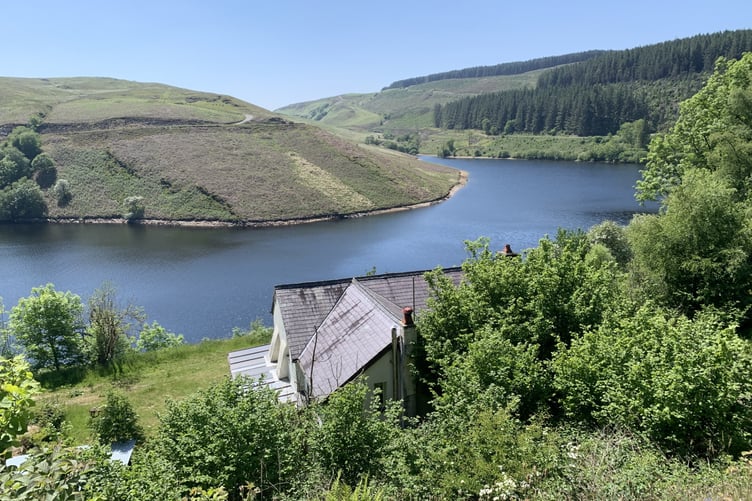
The lakes and lochs scattered throughout Britain all have their unique nature, charm, history, and myths.
As the UK’s second largest lake, Lower Lough Erne in Northern Ireland spans a staggering 42 miles and has over 100 islands. Scotland’s Loch Lomond has a famous song celebrating its ‘bonnie bonnie banks.’
Apart from possibly being home to one of the world’s most mysterious creature, Loch Ness has more water than the combined lakes of England and Wales. You can find many a ruined castle on the shore of the aptly named Loch Awe.
Windermere in England was formed during the last Ice Age and was a firm favourite with the romantic poets, and apparently, Taylor Swift.
Ullswater is surrounded by prehistoric ruins and Roman forts, and closer to home, Llyn Tegid, or Bala Lake as it’s known in the English tongue is home to a unique species of fish called gwyniad.
Llandegfedd Lake is a Site of Special Scientific Interest and a haven for watersports!
Llangorse Lake is the size of 400 football pitches and is shrouded in legend. It is said the artificial island in the middle was built as a residence for the King of Brycheiniog. Its water was also said to be magical and capable of helping people predict the future. In 1188 Gerald of Wales visited and was told that the green and red currents in the water were signs that an enemy invasion was on the horizon.
The most enduring myth surrounding Llangorse Lake is that it was said to be home to a mythical Welsh water monster known as an afanc. This particular afanc was named Gorsey and in the 15th century the poet Lewys Glyn immortalized it in verse with the words, “The afanc am I, who sought for, bides in hiding on the edge of the lake…”
The crystal clear waters and otherworldly nature of Talybont Reservoir were said to have inspired J.R.R. Tolkien when he was staying nearby, and on our doorstep, we have Keeper’s Pond which attracts visitors from all over who wish to indulge in a bit of wild swimming or take in the breathtaking views.
Not as close, but easily within the reach of a casual day trip we have the largest lake in South Wales - Llyn Brianne Reservoir and Dam.
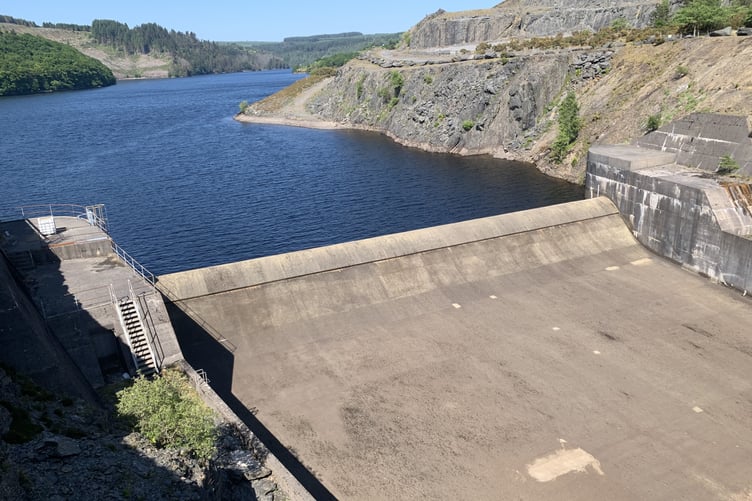
As a body of water that was man-made in the 1970s, and built by the construction arm of former fast food giants Wimpey, Llyn Brianne may not be steeped in ancient history and mythology like other lakes dotted throughout this island but it does have a curious origin story and an even more curious reputation as boasting Britain’s largest dam and an overflow spillway which has attracted keen kayakers from all over the world.
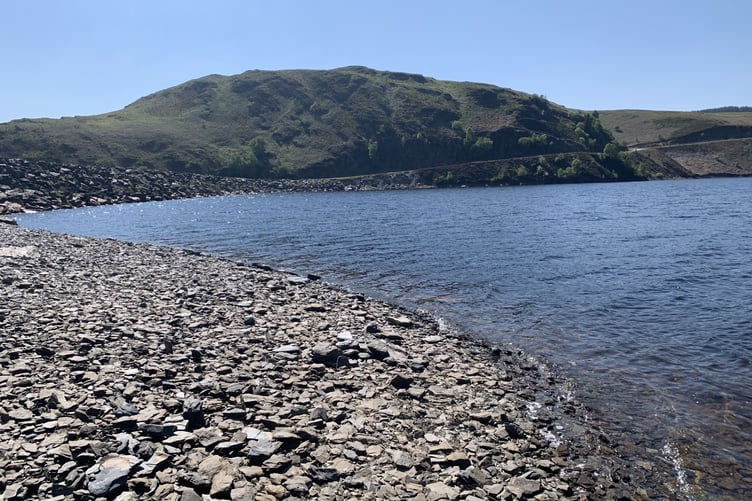
Depending on when you visit Llyn Brianne you’ll be left with a different impression. During the still and lazy heat of a summer’s afternoon, it’s postcard-perfect. In the blustery and optimistic breeze of spring, you almost expect to bump into the von Trapp family, resplendent in lederhosen, singing Edelweiss, and carrying picnic hampers. In the mellow mists of autumn, you can imagine a female hand appearing through the dark water and holding Excalibur aloft. And in the stripped and bleak midwinter, it’s a place you can imagine fleeing to in the event of a zombie outbreak or a site where James Bond might do something Bond-like as he saves the world again.
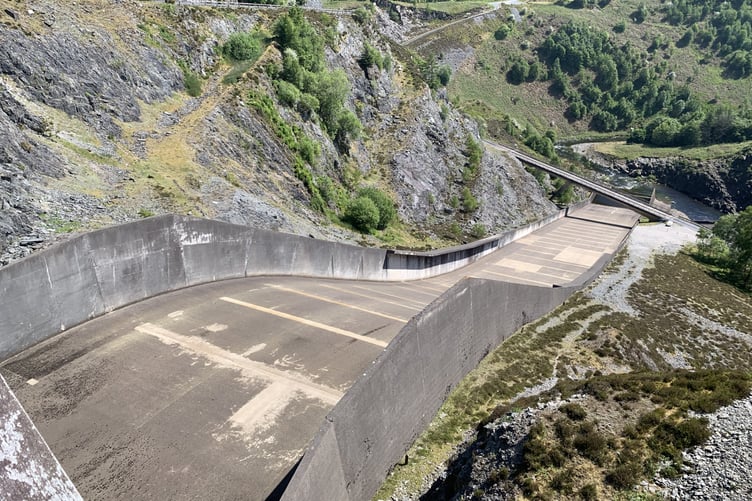
Yet no matter what time of the year you visit Llyn Brianne, if the reservoir is not overtopping and the spillway fails to run fast and furious with the sound of cascading water rushing 1,000ft to the valley below, then you’ll feel a little cheated.
Not that most people would want to jump in a kayak and plunge headfirst down the terrible torrent. It’s just there’s something hypnotic and calming about water that runs with such a frothing fury into a big pool.
The contrast between seeing a force of nature being constrained by man-made endeavor is an epic and endlessly appealing one.
Particularly if you’re interested in extreme watersports!
Up until they were banned in 2011 kayakers traveled from all over the world to test their mettle against the pull and shove of the Llyn Brianne overflow. Something which the planners never envisaged when Princess Alexandra cut the ribbon and officially opened it way back in 1973.
From tiny acorns, mighty oaks are born, and Llyn Brianne took its name from a nearby stream in the hills aptly named Nant y Bryniau.
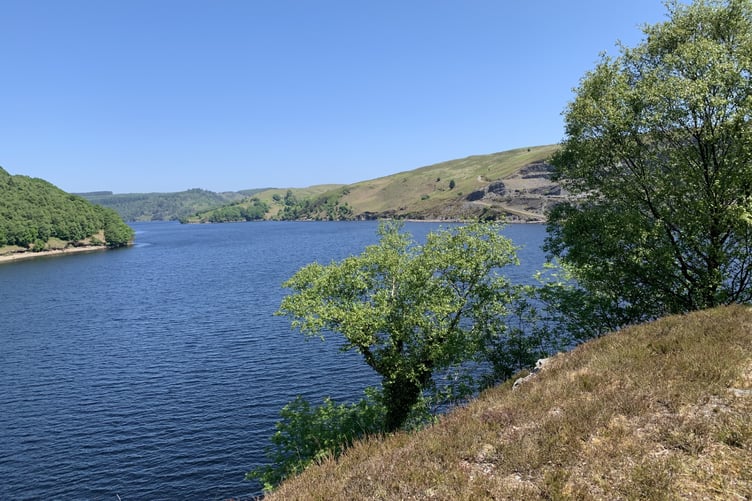
Yet instead of naming the new reservoir Llyn y Bryniau which would translate as ‘lake of the hills’ the powers that be opted for a name that was unfamiliar to the locals - Brianne!
It was not only the alien choice of word that bothered those who lived in close proximity to the new development. Many who lived in villages lower down the valley feared that when the great river Tywi (Towy) was finally restrained by 300 feet of stone and skill, the dam wall wouldn’t hold. There was real concern that one day they would be swept away like so much flotsam and jetsam in a great flood of biblical proportions.
They needn’t have worried!
The isolated reservoir that sits at almost a thousand feet above sea level is a spectacular feat of engineering. In fact, the dam is pretty much reminiscent of a mountain that was put together by a bored god who decided one lazy afternoon to block the valley for fun.
The dam has yet to be overcome by Mother Nature, despite the constant downfall and deluge that batters Wales increasingly with every passing year.
Interestingly, during its construction, there were a number of compulsory land purchases made and several houses sit submerged beneath the water. The roof of one farmhouse is still visible when the reservoir levels are low.
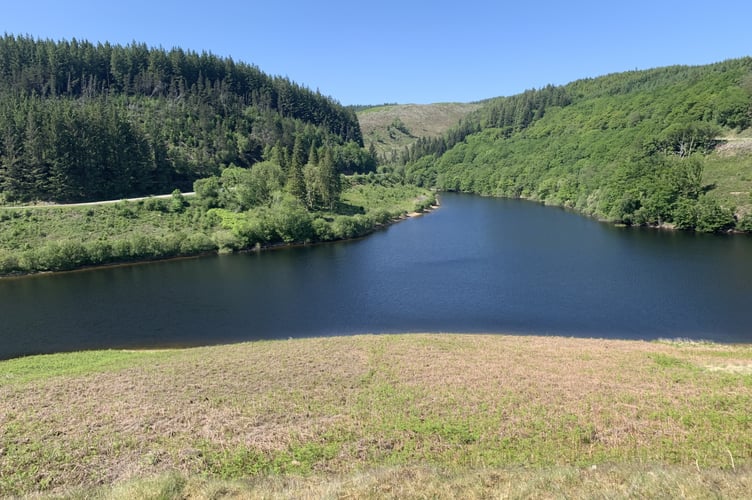
Yet if it weren’t for Llyn Brianne reservoir, a lot of showers in Swansea, Neath, and Cardiff would trickle to a halt, and kettles would soon run dry.
Nowadays, the huge body of water in the Cambrian Mountains is a popular destination for hiking, birdwatching, fishing, mountain biking and because it was awarded Dark Sky Discovery Site status in October 2019, stargazing.
Being alone beneath the heavens in such an isolated site, with wide open skies and moody mountains in all directions is a great place to spot a falling star, but it’s no longer a good idea to go kayaking there, particularly on the spillway, because in about 2008 Welsh Water slammed the practice as “dangerous” and banned it.
In 2011 the Dwr Cymru Cyf, Llyn Bylaws were introduced which forbids, “bathing, diving, and swimming in the reservoir, as well as using any boat (kayak, canoe or any other vessel including a ski-jet) in on or over any part of the waterway.”
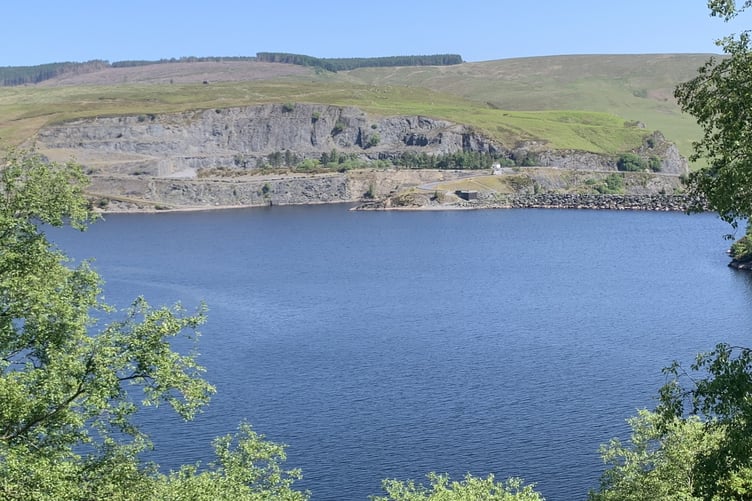
Yet rewind the clock to the start of the 21st Century and kayak enthusiasts were lining up to throw themselves down the Llyn Brianne spillway for kicks.
According to local legend, using the spillway for fun began shortly before the reservoir was officially opened.
It is said that a construction engineer got bored one day, and eyeing the spillway with the same sort of fevered eye that a kid with a sleigh eyes a snow-covered hill. Not thinking of the consequences he hopped on a shovel and went hell for leather down the concrete slope.
He was left with third-degree burns on his buttocks for his troubles but a seed had been sown. If you had that much fun when the spillway was dry, how much more fun could be had when it was covered in a wall of foaming and flowing water?
Over subsequent decades, whitewater warriors and kamikaze kayakers would flock to the site and have a crack at the notorious Llyn Brianne spillway.
It was dangerous, reckless, and foolhardy, but it was also a trial by fire, or water, for individuals who liked to tempt fate in a lump of moulded and reinforced plastic.
The sight of tiny people in helmets, armed only with an oar and their own audacity throwing themselves at speeds of 45 mph down a wall of 1,000-foot water before not so much as splashing but bouncing to an abrupt and sudden halt in the waiting pool at the bottom used to be a common sight, much to the dismay of Welsh Water officials.
They believed it was only a matter of time before someone was seriously injured or killed.
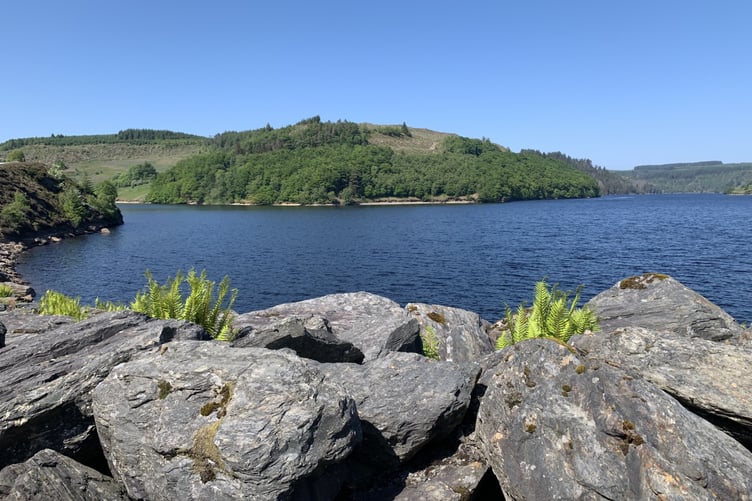
Kayak legend Shaun Baker is a man often referred to as a “modern-day pioneer of the extreme.” He holds seven Guinness World Records for paddling off huge waterfalls and tackling impossibly steep rivers and is no stranger to near-death experiences.
He was also one of the first people to brave Llyn Brianne spillway in a kayak, and told The Daily Mail in 2008, “I can't believe how stupid I was and I would urge anyone else not to go near it. If you don't hit the bottom dead straight and fly over the wall, you can either break your back on impact, break your neck on the steel sill, or just drown.'
Reflecting on his own experience of tackling the Llyn Brianne beast, Shaun explained, “The boat just went ballistic. I spun 360 degrees clinging on to my paddles for dear life. I must have worn three inches off the blades and if I'd lost them, I'd have worn my fingers down to the first joint just trying to steer.
“If you don't steer and you hit that sill, you'll just shear your head off. I managed to get it right just as I hit the bottom.
“Suddenly, I was being forced under and thrown around like a pair of socks in a washing machine. I must have been stuck under for about 40 seconds before I surfaced on the edge. The whole episode was just very scary. I just look back on it and think, ‘I shouldn't have got out of that.’”
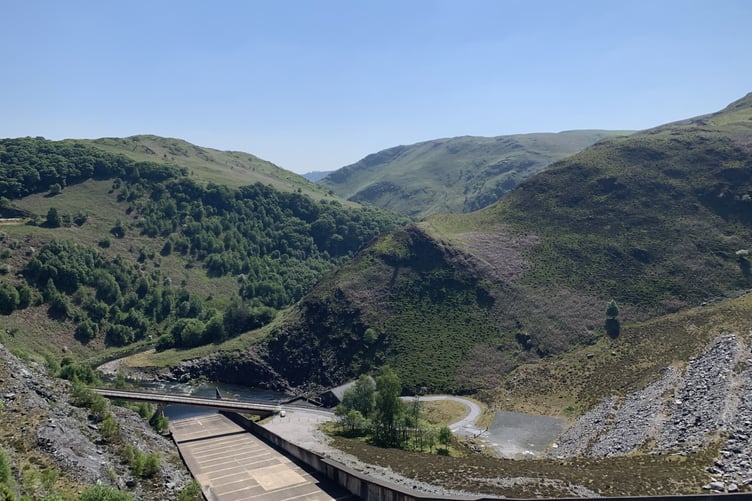
Fast forward to more modern times and the most extreme thing you’ll find at Llyn Brianne is an electric bike.
The thrill seekers have long since left, but the natural wonder and engineering marvel that conspires to create one of Wales’ most spectacular sites remain.
And while you’re at it…….
If you find yourself in the vicinity of Llyn Brianne Reservoir and Dam someday soon, you may also want to check out the cave of Tym Sion Cati which is but an eight-mile circular walk away.
Known as “The Welsh Robin Hood” Tym Sion Cati was a wild and legendary figure who captured the imagination of many for reportedly incurring the wrath of the wealthy with his daring escapades.
His adventures have been made larger than life by many a novelist, but it is now thought the acclaimed poet and protestant fled to his notorious bolt hole at Rhandirmwyn to escape religious persecution as opposed to the anger of the landed gentry.
The Royal Astrologer John Dee and Welsh Protestant martyr John Penry were amongst Tym’s friends and although he once escaped to Geneva to avoid being executed by ‘Bloody Mary’, her sister Queen Elizabeth I later pardoned him.
Alun Jones, who played an instrumental part in the 2018 campaign to erect special signs to direct walkers to Twm Sion Cati’s Cave, told the South Wales Guardian, “It was a shame that many of the people who flocked every year to Llyn Brianne reservoir probably didn’t know about Twm Sion Cati and his cave. The signs will certainly help to give Twm the recognition and respect he deserves.”
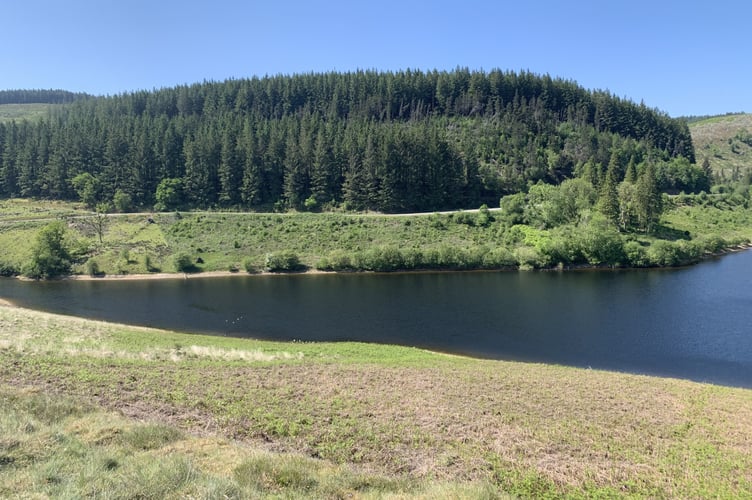




Comments
This article has no comments yet. Be the first to leave a comment.